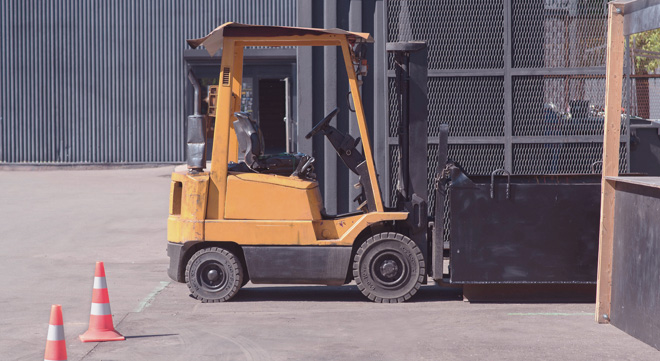An employee who was knocked down by a forklift will not receive compensation from the Road Accident Fund (RAF) after the Supreme Court of Appeal (SCA) ruled that the forklift was not a motor vehicle in terms of the RAF Act.
The applicant, Ndidzulafhi Menangwele, was working in the receiving area at a Spar in Nzhelele, Limpopo, in November 2016 when a Hyster 250 knocked her down and drove over her leg. She was admitted to hospital.
Menangwele filed for damages against the RAF, which conceded the merits at 80% in her favour, provided the High Court found that the forklift was a motor vehicle.
There are three requirements for a vehicle to qualify as a motor vehicle under the RAF Act. The vehicle must (a) be propelled by fuel, gas, or electricity; (b) be designed for propulsion; and (c) on a road.
The High Court in Thohoyandou held that the forklift could not be classified as a motor vehicle in terms of the Act because the collision occurred in a private loading facility, not on a public road.
The only two witnesses to the incident were Menangwele and the driver of the forklift, Mashudu Tshishonga.
Menangwele testified that the forklift was generally used to carry loads within Spar’s premises. However, the forklift would sometimes be driven outside the premises, crossing over the public road to a Boxer store.
But Tshishonga denied that the forklift would sometimes be driven outside the premises or around the parking areas. He testified that he was specifically told and trained not to drive the forklift on the main road.
Decisions in similar cases
The SCA said the question in Menangwele’s appeal was whether the design of the Hyster 250 disqualified it from being a motor vehicle as contemplated in the RAF Act. In other words, was the forklift designed or adapted for propulsion or haulage on a road?
In the case of Chauke v Santam Ltd, which concerned a collision between a worker and a forklift in the enclosed area of a transport company, the SCA concluded that “just because a vehicle can be used on a road by no means implies that it was designed for propulsion on a road”.
Counsel for Menangwele submitted that the decision in Chauke differed from the present matter for three reasons:
- The forklift in Chauke did not have headlights and was only driven on the premises during day, whereas the forklift in this matter had headlights;
- It did not have indicators, whereas the forklift in this matter had indicators; and
- The forklift was not used on the road but was only used in and out of the warehouse and in the yard, whereas the forklift in this matter was not restricted to a demarcated area and would be in the parking area where customers rested.
Counsel for Menangwele also relied on RAF v Mbele, where the SCA concluded that a reach stacker satisfied the requirements to be classified as a motor vehicle in terms of the RAF Act. A reach stacker is a large industrial vehicle that combines components of a forklift and a mobile crane and is designed primarily for lifting, manoeuvring, and stacking containers in the container yards of small terminals of medium-sized ports.
But the SCA said the reliance on Mbele was misplaced. The present matter differed from Mbele because section 1 of the RAF Act is clear that “the vehicle must be designed … for propulsion on a road” (SCA’s emphasis). The reach stacker in Mbele was designed for use on the roads in the harbour. In the present matter, the evidence was that the Hyster 250 forklift did not travel on the public road.
What is a ‘road’?
The SCA said it was significant that the RAF Act does not define a “road”. Therefore, it must bear its ordinary meaning of “a wide way leading from one place to another, especially one with a specially prepared surface which vehicles can use”. This definition is partially aligned to the definition in the National Road Traffic Act, which restricts its definition to a “public road”. The focus on the definition of a motor vehicle in this matter must therefore be on the words “vehicle designed … for propulsion … on a road”.
“The forklift in this case was used in and out of the Spar store at the receiving area in the yard. This case is therefore similar to Chauke, since in that case the Hyster 250 was not used on a road but was used in and out of the warehouse in the yard. The receiving area is a private area and not a road. It is used only to receive and load goods and is not used by the general public. The Hyster 250 forklift therefore does not qualify to be classified as a motor vehicle for purposes of the RAF [Act],” said Justice Daisy Molefe, who wrote the court’s judgment.
The SCA dismissed the appeal and ordered each party to pay its own costs.




Should the claim then not fall under a Public Liability Policy as the courts ruled that it’s not a road going vehicle. A bit confused here?
Tool of trade extension General Liability cover.